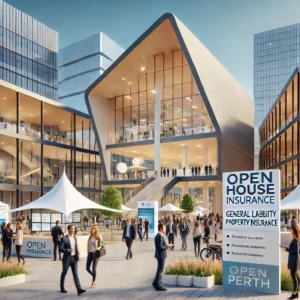Openhouseperth.net insurance Top Tips for Insuring
Insurance is a contract between an individual or entity (the insured) and an insurance company (the insurer). The insured pays a premium, and the insurer agrees to provide financial protection or reimbursement against specific risks, Openhouseperth.net insurance or damages outlined in the insurance policy.
The primary purpose of insurance is to transfer risk from the insured to the insurer.Openhouseperth.net insurance By pooling the risks of many individuals or entities, insurance companies can spread the cost of potential losses across a larger group, making the financial burden more manageable for each policyholder.
There are various types of insurance policies available,Openhouseperth.net insurance Top Tips for Insuring each designed to cover specific risks or events. Some common types of insurance include:
-
Health Insurance:
-
Provides coverage for medical expenses, hospitalization, and sometimes prescription drugs.
-
Life Insurance:
-
Pays out a lump sum to beneficiaries in the event of the policyholder’s death.
-
Auto Insurance:
-
Covers damages or injuries resulting from vehicle accidents, theft, or other incidents involving cars or other vehicles.
-
Homeowner’s Insurance:
-
Protects against losses or damages to a person’s home, personal belongings, and potential liabilities.
Understanding Openhouseperth.net Insurance
Insurance policies can be customized to meet specific Openhouseperth.net insurance with different levels of coverage, deductibles, and premiums. The terms and conditions of each policy outline the specific risks covered, exclusions, and the process for filing claims.
Why is Insurance Important for Homeowners?
Homeowner’s insurance is crucial for protecting one of your most significant investments – your home. It safeguards you against various risks and potential financial losses that could arise from unexpected events or accidents. Here are some key reasons why homeowner’s insurance is essential:
Risks Covered by Homeowner’s Insurance
A comprehensive homeowner’s insurance policy typically covers a wide range of risks, including:
- Damage to your home and personal belongings due to fire, storms, theft, or other covered perils.
Financial Protection
Homeownership is a significant financial investment, and the costs associated with repairing or rebuilding a damaged home can be astronomical. Openhouseperth.net insurance Top Tips for Insuring Homeowner’s insurance provides financial protection against such expenses, helping you avoid the financial burden of paying out-of-pocket for costly repairs or replacements.
Legal Requirements
In some cases, homeowner’s insurance may be a legal requirement. If you have a mortgage, most lenders will require you to carry homeowner’s insurance to protect their investment in your property. Additionally, certain states or municipalities may mandate homeowner’s insurance as a condition of homeownership.
Types of Homeowner’s Insurance Policies

Homeowner’s insurance policies come in several different forms, known as HO-1 to HO-8. Each policy form offers varying levels of coverage and is designed to meet the specific needs of different types of homeowners. Here’s a breakdown of the most common homeowner’s insurance policy forms:
HO-1 (Basic Form):
The HO-1 policy is the most basic and limited form of homeowner’s insurance. It covers your home and personal belongings against a few named perils, such as fire,Openhouseperth.net insurance lightning, windstorm, and hail. However, it provides very limited coverage and is not widely available or recommended.
HO-2 (Broad Form):
The HO-2 policy is a step up from the HO-1, offering broader coverage for your home and personal belongingsOpenhouseperth.net insurance. It covers all risks except those specifically excluded in the policy, such as floods, earthquakes, and acts of war.
HO-3 (Special Form):
The HO-3 is the most common and widely used homeowner’s insurance policy. It provides comprehensive coverage for your home, personal belongings, and personal liability. Openhouseperth.net insurance It covers all risks except those specifically excluded, similar to the HO-2, but with additional coverages like water damage from plumbing leaks and damage caused by falling objects.
HO-4 (Renters Insurance):
The HO-4 policy is designed for renters and covers personal belongings against named perils. It also includes liability coverage in case someone is injured on the rented premises.
HO-5 (Comprehensive Form):
The HO-5 policy is the most comprehensive homeowner’s insurance policy available. It provides Openhouseperth.net insurance open perils coverage for your home and personal belongings, meaning it covers all risks unless specifically excluded. This policy is often recommended for high-value homes.
HO-6 (Condo Insurance):
The HO-6 policy is designed specifically for condominium owners. It covers personal belongings, personal liability, and certain portions of the condo unit that are not covered by the condo association’s master policy.
HO-7 (Mobile Home Insurance):
The HO-7 policy is tailored for mobile or manufactured homes. It provides coverage similar to the HO-3 policy but with specific provisions for mobile homes.
HO-8 (Older Home Insurance):
It provides coverage similar to the HO-3 policy but with additional provisions for older homes.
Factors that can affect your homeowner’s insurance premiums include the age and condition of your home, its location, the amount of coverage you choose, your deductible, and any additional endorsements or riders you add to your policy.
Understanding Homeowner’s Insurance Coverage
Homeowner’s insurance policies typically provide several types of coverage to protect your home and belongings. Here are the main components of a standard homeowner’s insurance policy:
Dwelling Coverage:
This covers the physical structure of your home, including the walls, roof, and any attached structures like a garage or deck. If your home is damaged or destroyed by a covered peril, such as fire, lightning, or a fallen tree, dwelling coverage will pay for the repairs or rebuild, up to the policy limit.
Personal Property Coverage:
This coverage protects your personal belongings, such as furniture, clothing, electronics, and appliances, from covered perils like theft, fire, or storms. Most policies provide personal property coverage for items inside your home, as well as items temporarily away from home, like luggage during travel.
Liability Coverage:
This coverage also typically includes medical payments to others, which can cover small medical bills for injuries that occur on your property.
Additional Living Expenses:
It’s important to carefully review your homeowner’s insurance policy to understand the specific coverage limits, deductibles, and exclusions. Some policies may also provide additional endorsements or riders for added protection, such as coverage for valuable items like jewelry or artwork, or protection against specific perils like earthquakes or floods.
FAQs About Openhouseperth.net Insurance
1. What is Openhouseperth.net insurance, and who is it for?
Openhouseperth.net insurance is designed specifically for individuals and organizations involved in architecture, real estate, and public events around Perth. It provides comprehensive coverage for architectural events, property showcases, and public tours. Whether you are an architect hosting a design tour or a venue manager organizing an exhibition, Openhouseperth.net insurance ensures that you’re protected from potential risks such as property damage, bodily injuries, or cancellations. It also caters to professionals working in the design and construction industries who need insurance to cover liabilities related to their services.
2. What types of insurance does Openhouseperth.net offer?
Openhouseperth.net offers a range of insurance policies, including:
- General Liability Insurance: Protects against bodily injuries or property damage that occur during events.
- Property Insurance: Covers damages to venues and structures caused by events such as fire, flood, or vandalism.
- Event Cancellation Insurance: Reimburses financial losses if an event is canceled due to unforeseen circumstances like severe weather or public emergencies.
- Professional Liability Insurance: Specifically for architects and designers, this policy covers claims of negligence or mistakes in professional services.
3. Why do I need general liability insurance for my event?
General liability insurance is essential for protecting yourself or your organization from claims related to injuries or property damage that might happen during your event. For example, if someone attending your architectural tour slips and gets injured, you may be held liable for medical costs and legal expenses. General liability insurance ensures that such costs are covered, allowing you to focus on the success of your event without the worry of unforeseen financial burdens.
4. What does property insurance cover, and is it necessary for public spaces?
Property insurance protects your venue or the structure you’re showcasing from damage caused by incidents like fire, floods, vandalism, or other natural disasters. Public spaces, especially those that host large numbers of people, are vulnerable to unexpected damages. If you’re managing a high-value building or public exhibition space, property insurance is critical to minimize risk. This ensures that repairs or replacements are covered, safeguarding your investment and the continuity of your event or project.
5. How does event cancellation insurance work?
Event cancellation insurance is designed to protect you from financial loss if your event cannot proceed as planned due to reasons beyond your control. This could include severe weather, public health emergencies, or venue issues. When an event is canceled, you may face significant costs, including vendor payments, marketing fees, and refunds to attendees. Event cancellation insurance covers these expenses, ensuring that your business or organization isn’t severely impacted by the cancellation.
6. Is professional liability insurance important for architects and designers?
Yes, professional liability insurance, also known as errors and omissions insurance, is crucial for architects, designers, and professionals in similar fields. This type of insurance protects you from claims of negligence, errors, or omissions in your professional services. If a client claims that your design led to financial losses or construction defects, professional liability insurance covers legal fees, settlements, and other associated costs. It ensures that your reputation and finances are protected in the event of a dispute.
7. How do I choose the right insurance package for my event or project?
Choosing the right insurance package depends on the type of event or project you are organizing, the size and value of your venue, and the number of participants or attendees. For example, smaller events may require only general liability insurance, while larger, more complex projects may need property insurance and professional liability as well. Openhouseperth.net works with various insurance providers to offer tailored packages that fit your specific needs. It’s always a good idea to discuss your project with an insurance specialist to identify potential risks and ensure full coverage.
8. Can I combine different types of insurance for full coverage?
Yes, you can combine multiple types of insurance policies to ensure full coverage for your event or project. For instance, a large architectural exhibition might require general liability, property insurance, and event cancellation insurance for comprehensive protection. Openhouseperth.net offers flexible insurance packages that allow you to combine policies depending on the nature of your event, the venue, and any additional risks. Speak with an insurance consultant to create a package that covers all possible contingencies.
9. How do I file a claim with Openhouseperth.net insurance?
Filing a claim with Openhouseperth.net insurance is straightforward. First, ensure that you have all necessary documentation related to the incident, such as photographs of property damage or medical reports for injuries. Then, contact your insurance provider through Openhouseperth.net’s platform to report the incident. A claims specialist will guide you through the process, including submitting the required paperwork and estimating the cost of damages. It’s important to file your claim as soon as possible to ensure timely processing and reimbursement.
10. How much does insurance through Openhouseperth.net typically cost?
The cost of insurance through Openhouseperth.net varies depending on the type and extent of coverage you need. Factors such as the size of your event, the value of your property, the number of attendees, and the specific risks associated with your project will all influence the premium. General liability insurance for a small event will likely cost less than comprehensive coverage for a large-scale architectural exhibition. To get an accurate quote, you can request a consultation through Openhouseperth.net’s platform, where insurance providers will offer competitive pricing based on your requirements.

